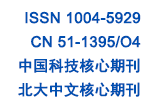CHEN Yan, CHEN Huan, CHEN Zhoutian, LI Yingying, YANG Danting, SHEN Liliang
 Abstract
Abstract (
)
 Download PDF
Download PDF (
)
 Knowledge map
Knowledge map
 Save
Save
Pseudomonas aeruginosa which can lead to chronic clinical infection is an important pathogen of burns, urinary tract infection and cystic fibrosis. As the secondary metabolites produced by P. aeruginosa, pyocyanin (PYO) can cause cell death in patients with infection, closely related to high mortality. Therefore, the direct and rapid detection of PYO, as the biomarker of P. aeruginosa, is able to reduce the analysis time and improve the diagnostic effect. Here, we constructed a SERS array platform using silver nanoparticles modified glass slides via electrostatic adsorption to achieve the direct and rapid detection of pyocyanin in the culture medium and saliva. The results showed that, the main SERS peak shifts of PYO were mainly 420, 543, 597, 680, 1354, 1598 and 1615 cm-1. The Raman shifts at 420 cm-1 and 1615 cm-1 used for quantitative analysis were respectively attributed to -CCN ring bending and C=N ring bending, as well as C=C ring stretching and C=N ring stretching. The limit of detection of PYO in broth medium and saliva were 0.5 $\mu M$, and 0.35 $\mu M$, respectively. It is far below the detection concentration of PYO in clinical samples. This shows that the surface modified SERS array we constructed has the potential to be capable of the point-of-care detection clinically with high sensitivity of the metabolites of P. aeruginosa.


